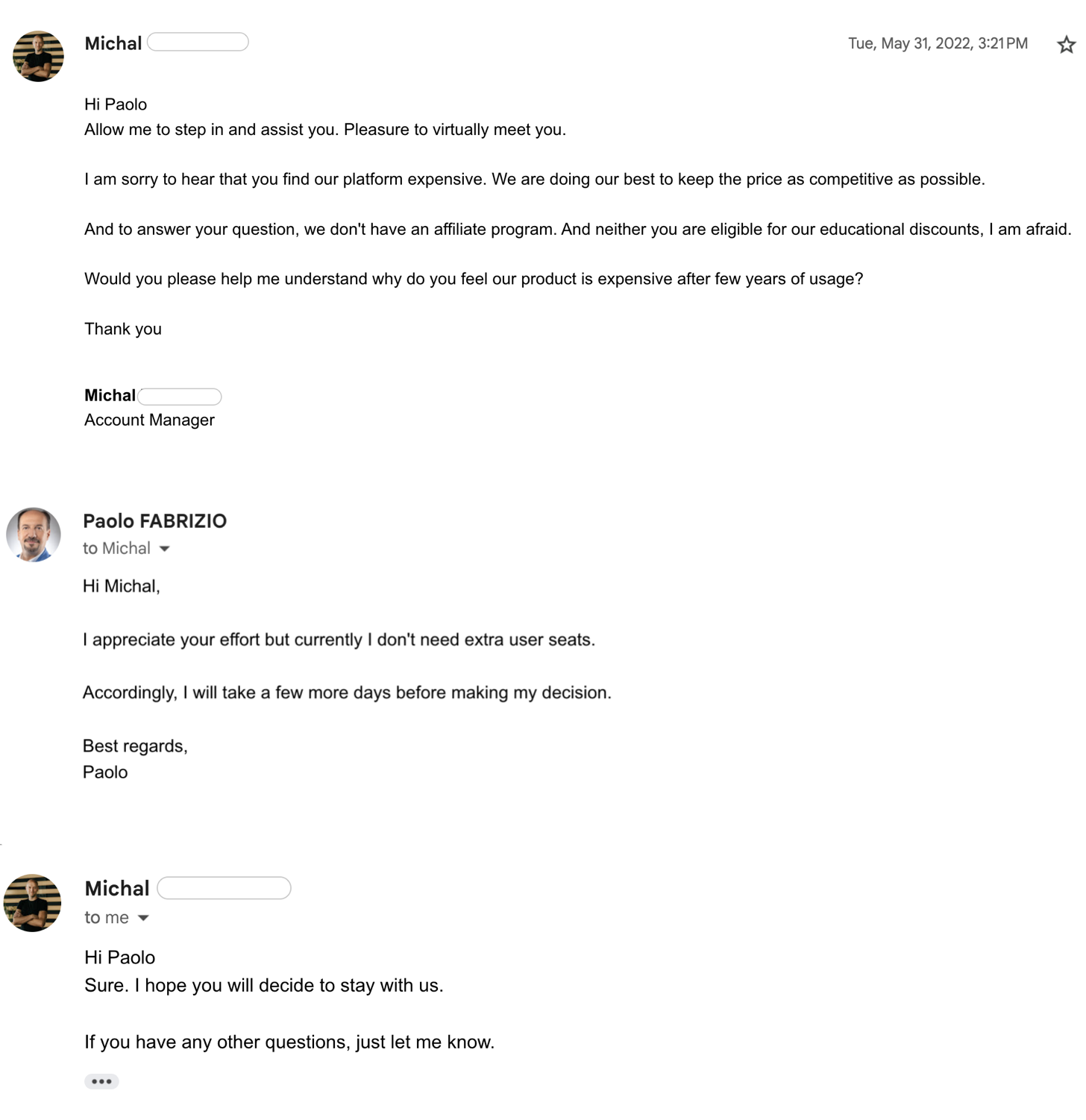As there are good and bad persons on this worlds, every customer is not a good customer. Despite that, still some companies allow bad customers’ behaviors because they are afraid to lose them, making the worst mistake: tolerating what they’d never accept by their own employees! Conversely when the customer respects you, you’re on the right route to build a healthy and long lasting relationship with them.
Where some are failing
Basically, whenever your staff have a conversation with a customer, they have the opportunity to show your company values through their words and actions. Concurrently, your customer service team may provide the customer with good news, other times they’ll have to reject some of their queries – and that’s the crucial part where many fail. A typical ‘stumbling’ situation? Agents providing different answers to the same customer’s request on different conversational channels; e.g. “sorry, it’s impossible” via email, to “maybe we can review that for you…” over email, to a “yes, you can have it” response over social media (!).
⚠️ Warning: in such situations, bad customers take such hiccups as an opportunity to treat your business like an ‘all you can eat‘ restaurant: thus sucking up time, productivity and your front line agents best energies.
3 drivers to build trust
After working over 20 years within companies as a manager and almost 10 as a consultant I’ve learnt that the only way to gain and maintain customer’s trust is delivering on promises. Day by day, conversation after conversation. That’s where customer service plays a key role, today more than ever, having to manage multiple conversations over various Digital Customer Service channels. Accordingly, these are the three key behaviors your customer support team need to apply consistently:
- Be coherent – don’t create expectations unless you’re 100% sure that you can deliver on them. Where possible, over deliver. E.g. day 1 Agent: “I’ll check with my manager and let you know tomorrow afternoon” Customer: “Alright, thanks”. Then on day 2 indeed the agent calls the customer back in the afternoon (when expected) or in the morning (sooner than expected).
- Stick to your values – if ‘transparency’ is one of your core values, you can’t hide bad news to the customer. All your front line staff shall instead be empowered to inform the customer clearly and proactively – e.g. what’s the nature of the issue and what are they doing to fix it.
- Show your unique personality – e.g. don’t be afraid to say ‘NO’ to the customer when it’s necessary. However make sure to do it in the most convincing and effective way to maintain a solid relationship, especially with good customers (aka those who may disagree with you but are fair and respect your work).
Below an eye-opening example. As customer, I had asked for a discount on a pretty expensive yearly subscription to a digital platform. Well, interlocutor rejected my request in a kind and firm way despite my attempt to insist after his first denial.👇

To make a long story short, I decided to stay – and still today I’m a customer of this company. Although I wasn’t happy to get my request rejected, I accepted their position and now I respect them even more than before that conversation. All in all, from a customer service standpoint, I’m 100% sure that the person that declined my request was empowered to maintain that position, regardless of my reaction.
Over to you
To which extent the customer respects you? Did you set up clear guidelines when it comes to saying ‘no’ to them and handling their reaction? I’m looking forward to reading your feedback.
Let’s share our experiences in this informal conversation.
Have great conversations.
Credit image: Unsplash.com







